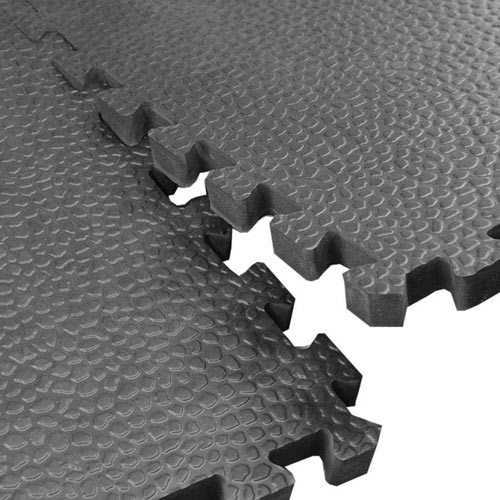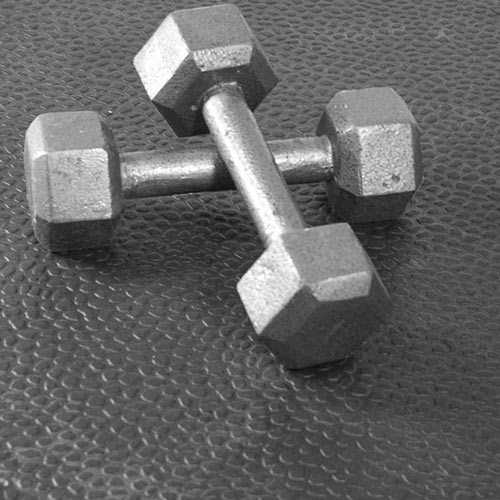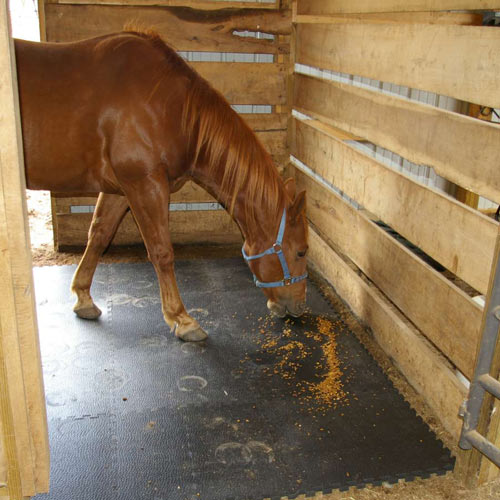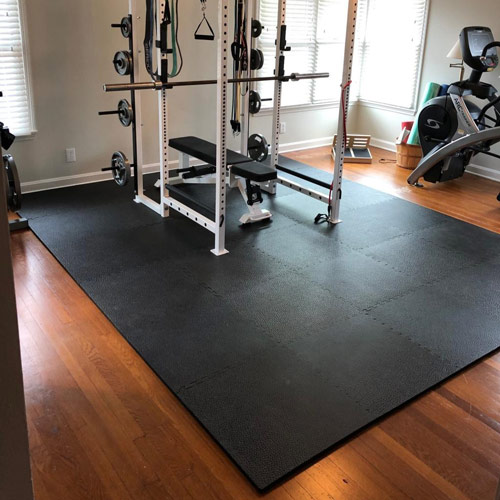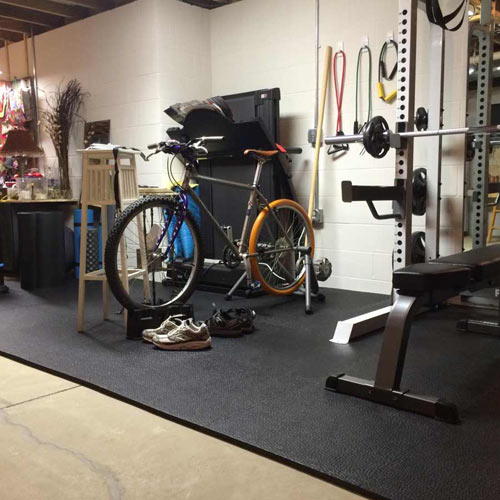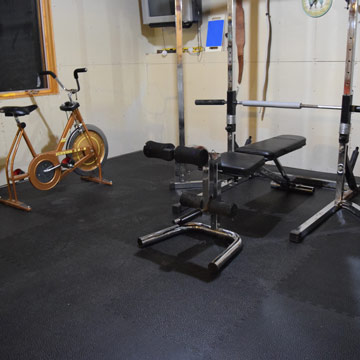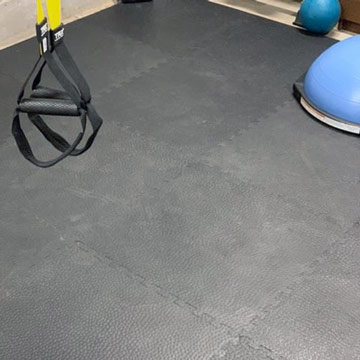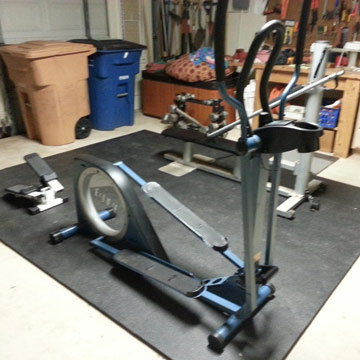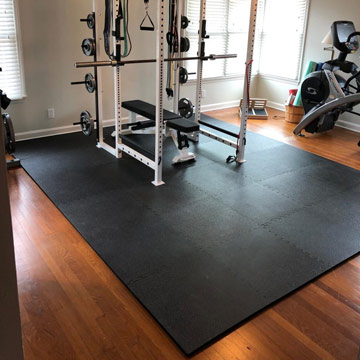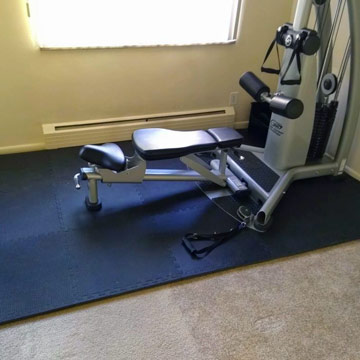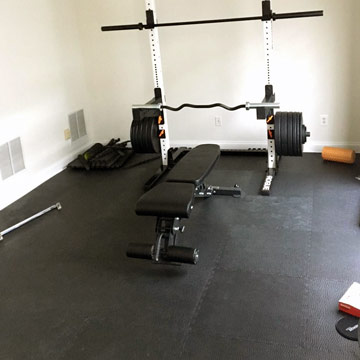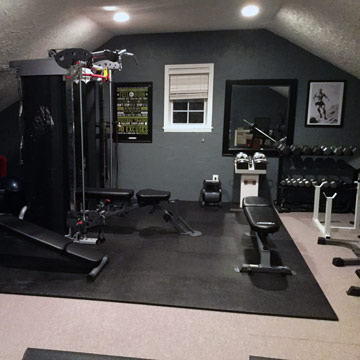Pebble Top Gym & Portable Horse Stall Mats Features & Benefits
Related Product: Portable Horse Stall Mats 3/4 Inch x 2x2 Ft.
Why Portable Horse Stall Mats Are a Great Investment
There are many reasons to invest in portable stall mats.1. Ease of Transportation
If you travel with your horse, portable horse stall mats are designed to travel with you. At Greatmats, we carry portable stall mats that are made of high-density EVA foam. These mats measure 2x2 feet by ¾ inch thick, and they’re conveniently sized so you can easily load them into a trailer or store them away in a spare stall once you’re back home. They weigh just 2.2 pounds each, so they’re much lighter than a rubber mat, and a single person can easily carry and install them.
2. Ease of Installation
These foam mats feature an interlocking design which makes for a quick and easy assembly and disassembly.
3. Safety and Comfort
These mats feature a pebble surface that delivers anti-slip benefits, helping to keep both horses and humans safe.
Plus, the mats provide a soft surface for your horse while still being durable. They’re an excellent way to cushion a hard concrete floor in a temporary stall setup. By bringing portable mats along with you, you can minimize the amount of bedding that you have to use to keep your horse comfortable. Keeping your horse as comfortable as possible may encourage your horse to sleep and rest. When your horse is comfortable and well-rested, he’s more likely to perform well, too.
4. Ease of Cleaning
By installing mats in your horse’s temporary stall, you can save time on your stall cleaning. It’s easier to clean a flat matted surface than it is to deal with a stall floor that’s pitted or rutted. If the stall floor is made of sand or dirt, that material can get mixed into your bedding, and sifting through it becomes a tiring chore. With stall mats, you’ll waste less bedding and be able to keep your horse’s stall cleaner, which can impact everything from hoof health to respiratory health.
A portable horse mat is easy to clean, too. The mats are water resistant, so there’s no need to worry about them being damaged during use. You can clean them with a broom or a damp mop, so they’re a low-maintenance choice.
Why Portable Foam Horse Stall Mats Are Ideal for Gyms, Too
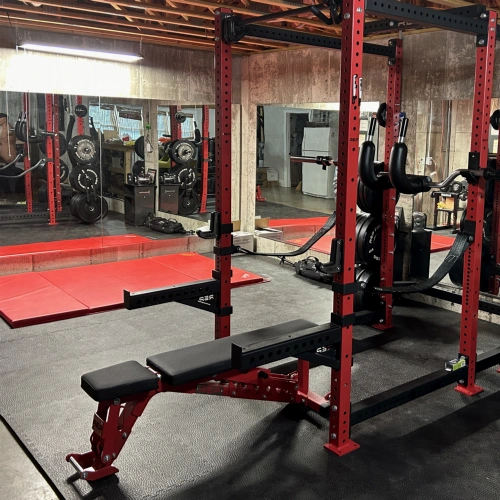
Using rubber stall mats for gym flooring has become a widespread practice. Thicker rubber mats provide the shock absorption needed for spaces where heavy weights are lifted and dropped, and stall mats are generously sized, so they’ll quickly cover large gym floors. But rubber mats can have a strong odor, are heavy, and may be thicker than needed for your gym. Portable horse stall mats offer an attractive alternative for several reasons.
No Rubber Odors
Using horse stall mats for home gym spaces means you don’t have to worry about the odors that rubber gives off. These odors can be overpowering for home gym spaces where ventilation is limited. Since portable mats are made of foam, they don’t produce such strong odors, making them a great gym mat substitute.
Easy Installation
Using portable stall mats for home gym spaces also means that you’ll enjoy an easier installation than you would if dealing with rubber mats. Portable mats are lightweight and conveniently sized, so you can easily carry them into and out of your home. The mats include border pieces to create a clean, finished edge, creating an aesthetically pleasing gym floor.
Strength and Durability
While these mats may be lightweight and easy to move, they’re highly durable. Portable mats are designed to withstand a horse’s weight, so they’re well-suited for gym use. The mats are strong enough to support heavy gym equipment without being damaged, making them a long-lasting choice for your gym space.
A Safe and Comfortable Surface
These mats create an ideal space for workouts. Their pebble top texture helps to maximize traction and prevent falls, so you can work out confidently without worrying about slipping. The mats offer just a bit of cushion, too, helping to absorb impacts and keeping you comfortable, which allows you to work out for longer periods of time.
